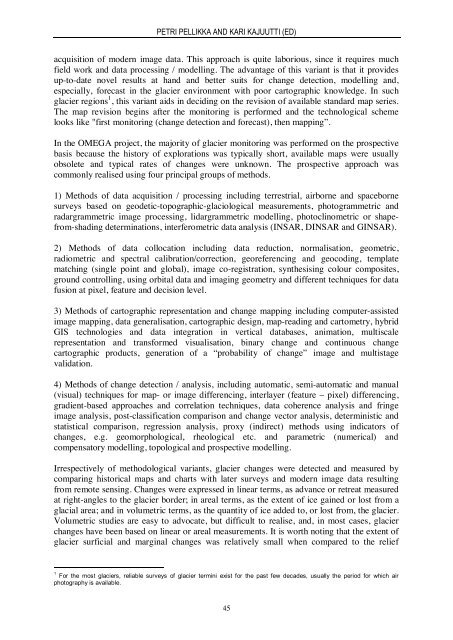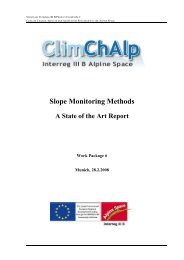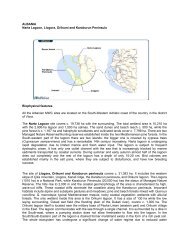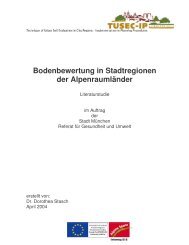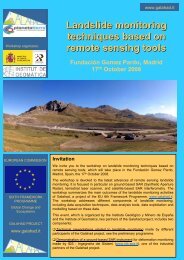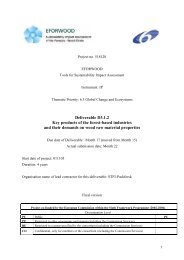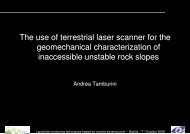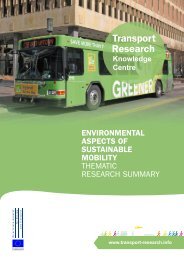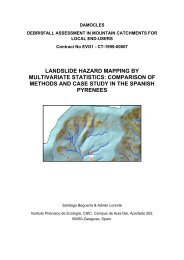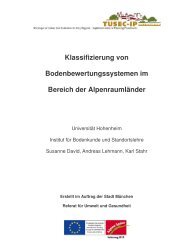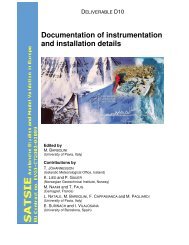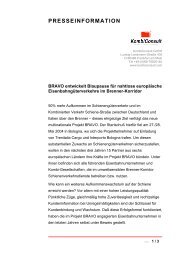1 Background - mountain.PROJECTS
1 Background - mountain.PROJECTS
1 Background - mountain.PROJECTS
You also want an ePaper? Increase the reach of your titles
YUMPU automatically turns print PDFs into web optimized ePapers that Google loves.
PETRI PELLIKKA AND KARI KAJUUTTI (ED)acquisition of modern image data. This approach is quite laborious, since it requires muchfield work and data processing / modelling. The advantage of this variant is that it providesup-to-date novel results at hand and better suits for change detection, modelling and,especially, forecast in the glacier environment with poor cartographic knowledge. In suchglacier regions 1 , this variant aids in deciding on the revision of available standard map series.The map revision begins after the monitoring is performed and the technological schemelooks like "first monitoring (change detection and forecast), then mapping”.In the OMEGA project, the majority of glacier monitoring was performed on the prospectivebasis because the history of explorations was typically short, available maps were usuallyobsolete and typical rates of changes were unknown. The prospective approach wascommonly realised using four principal groups of methods.1) Methods of data acquisition / processing including terrestrial, airborne and spacebornesurveys based on geodetic-topographic-glaciological measurements, photogrammetric andradargrammetric image processing, lidargrammetric modelling, photoclinometric or shapefrom-shadingdeterminations, interferometric data analysis (INSAR, DINSAR and GINSAR).2) Methods of data collocation including data reduction, normalisation, geometric,radiometric and spectral calibration/correction, georeferencing and geocoding, templatematching (single point and global), image co-registration, synthesising colour composites,ground controlling, using orbital data and imaging geometry and different techniques for datafusion at pixel, feature and decision level.3) Methods of cartographic representation and change mapping including computer-assistedimage mapping, data generalisation, cartographic design, map-reading and cartometry, hybridGIS technologies and data integration in vertical databases, animation, multiscalerepresentation and transformed visualisation, binary change and continuous changecartographic products, generation of a “probability of change” image and multistagevalidation.4) Methods of change detection / analysis, including automatic, semi-automatic and manual(visual) techniques for map- or image differencing, interlayer (feature – pixel) differencing,gradient-based approaches and correlation techniques, data coherence analysis and fringeimage analysis, post-classification comparison and change vector analysis, deterministic andstatistical comparison, regression analysis, proxy (indirect) methods using indicators ofchanges, e.g. geomorphological, rheological etc. and parametric (numerical) andcompensatory modelling, topological and prospective modelling.Irrespectively of methodological variants, glacier changes were detected and measured bycomparing historical maps and charts with later surveys and modern image data resultingfrom remote sensing. Changes were expressed in linear terms, as advance or retreat measuredat right-angles to the glacier border; in areal terms, as the extent of ice gained or lost from aglacial area; and in volumetric terms, as the quantity of ice added to, or lost from, the glacier.Volumetric studies are easy to advocate, but difficult to realise, and, in most cases, glacierchanges have been based on linear or areal measurements. It is worth noting that the extent ofglacier surficial and marginal changes was relatively small when compared to the relief1For the most glaciers, reliable surveys of glacier termini exist for the past few decades, usually the period for which airphotography is available.45


